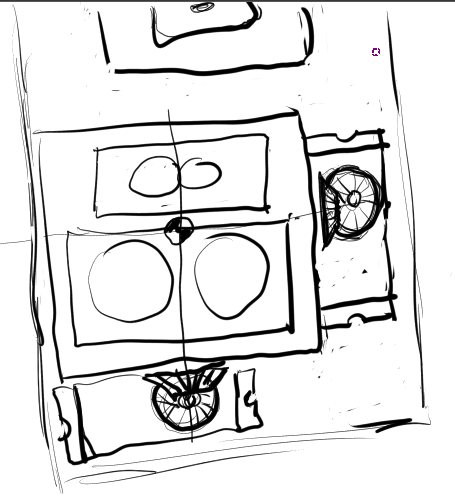I realize this probably has major flaws, something that is 10ft away vs. 5ft away will have different measurements anglewise, so idk... it might be a very dumb design/idea guess I'll find out at my own expense. I am aware spinning ones exist that give you a nice real time shape of the surroundings, at least in a 2D plane, this is not going to be fast. As mentioned the computation is the Pi Zero which is laughable, will probably use a remote computer(full sized Pi on same network).
Anyway it's mostly an excuse for me to learn OpenCV and then also to give my robots a brain since they just run into stuff.
"center of the centroid"
I intended to have these bumpers like how 3D printers "zero" themselves. But I'm not going to invest much more time into this thing since it's a bad design to begin with. I'm just going to work on getting a thing that's in one piece, can control two continuous-rotation servos(wheeled robot) and I'll calibrate it with a printed board/surface with known heights/distances. The camera will face that irregular platform and find the centers of those and calibrate, will use easy colors eg. red/green/blue.
Edit:
One problem/consideration is to use two "computers" or is it one and then a microcontroller. I liked the Arduino for things to do with servos and also the analog aspect(no need for ADC on Pi) but the issue is the communication between the two things(by serial). I had problems with hardware serial on the Elegoo Arduino Nano. The "brain" or RPi would do the calculations and then send that info to the Arduino which would then control the lidar servos for pan/tilt and the robot(servos/wheels).
I also thought about how to have the Servos directly mounted to the axis and not take up significantly more room using bevel gears and direct mounting.

Ehh it still looks bad/takes up too much room
 Jacob David C Cunningham
Jacob David C Cunningham
Discussions
Become a Hackaday.io Member
Create an account to leave a comment. Already have an account? Log In.